Joint pain: causes and how to treat
It is generally accepted that joint problems occur only in old age. But such a conviction lasts only as long as they do not make themselves felt earlier. There are many reasons why joints can get sick. Today we will figure out the main reasons that can serve as the origin of the problem, and also consider the most effective methods of treatment.
Content
Causes of joint pain
In medical language, such an ailment is called arthralgia and can be a symptom of many diseases. First, the joint is affected, and then arthritis develops, with the exception of some cases.
Arthralgia occurs due to irritation of neuroreceptors that are present in every joint, which occurs under the influence of a variety of factors. The main and primitive cause of joint pain is a banal bruise followed by the formation of a hematoma, which is invisible to the eye.
Here is a list and a short description of diseases that can cause joint pain.
Osteoarthritis
One of the most common chronic diseases, which most often affects the hip, majphalangeal and knee joints. It is based on disorders of a degenerative-dystrophic nature, that is, a simple violation of the metabolic process of bone tissue, joint cartilage and a connected apparatus. Anything can serve as an impetus for a sore, this is impaired metabolic processes, a professional factor, a deficiency in the body of vitamins D and C, age-related changes, various injuries, as well as excess weight.
Symptoms of osteoarthritis are manifested in stiffness due to joint pain. This increases when the person is exposed to physical activity, and also decreases when the patient is at relative rest. There are regular dull pains at night, and in the morning, when little activity appears, the joints calm down. At the very beginning of the movements, sharp starting pains can form, and then also quickly go away. There are also blockade pains, in which the affected cartilage, located between the surfaces of the joints, is jammed and infringed. There was also a local increase in temperature in the sore spot.
Ankylosing spondylitis
Inflammatory process of the axial articular skeleton (costal-vertebral, intervertebral, etc.). The basis lies in the immune-inflammatory processes in the body, as a result of which cicatricial fibrinous tissue is formed in the joints, on which various salts and trace elements cling, which blocks the full mobility of the joint. The first symptomatology manifests itself at a young age of the patient and is characterized by constant pain in the buttocks and lower back. Pain increases at night. Pain is also noted where the ribs attach to the spine, and it gets worse when coughing or breathing deeply. Stiffness in the movement of the back is felt. Posture is disturbed, there is increased sweating during the day, there are parallel diseases associated with the heart, kidneys, aorta and eyes.
Reactive arthritis
Acute inflammation in the joint (often in the lower extremities). The main impetus for the occurrence of reactive arthritis is the previous infection. These are, as a rule, acute respiratory infections and acute respiratory viral infections. Symptoms are as follows: persistent severe pain in the joints, which increases with movement, swelling and redness. There are also extra-articular manifestations: fever, heart disease, lesions of the central nervous system, skin and mucous membranes, problems with nails, etc.
Reiter's disease
A separate type of arthritis that develops against the background of a genetic predisposition. It often appears after the transferred intestinal or chlamydial infections. The manifestation of symptoms is mainly noted in the lower extremities as rheumatoid arthritis. There are extra-articular signs: diseases such as prostatitis, conjunctivitis, lesions on the skin and mucous membranes, heart problems and the appearance of fever. And, of course, there is no escaping the primitive pains that are noted in other types of arthralgia.
Rheumatoid arthritis
Chronic arthritis. It is a progressive inflammatory process, an autoimmune inflammation that occurs in the joints. As a rule, small joints located in the feet and hands are affected, where the knee and elbow joints are less likely to suffer.
Typical symptoms for rheumatoid arthritis are constant pain in the affected area, swelling of the diseased joint, stiffness in movements that is observed in the morning, increased fatigue, weight loss, skin lesions (pallor, cyanosis, small focal necrosis), asymmetry, swollen lymph nodes, lesion nail plates, problems with the gastrointestinal tract, heart damage and heart disease, eye damage, kidney damage, etc. With this type of arthritis, many organs are affected and a large number of body functions are blocked, it is difficult to list them here.
Psoriatic arthritis
In the overwhelming majority of cases, this type of arthritis develops in people who are genetically predisposed to diseases. psoriasis... The exacerbation of psoriatic arthritis coincides with the inflammatory processes of psoriasis itself. Symptoms are manifested by pain in the joints, usually interphalangeal, the skin acquires a purple-bluish color, swelling occurs, pronounced asymmetry is observed, pains appear in the lumbosacral spine, nails are affected, psoriatic plaques appear on the skin.
Gout
It is microcrystalline arthritis and is a hereditary condition. The cause of the development of the disease is impaired purine metabolism, which leads to the formation of deposits of urate crystals (uric acid salt) in the articular and periarticular tissues. Symptoms, and most often it is localized in the first metatarsophalangeal joint of the foot, manifests itself as follows: swelling appears, the temperature rises in the problem area, the skin on the elbows, near the ears, hands, feet, hands is peeling, and other skin manifestations are noted in the mentioned areas.
In addition, damage to internal organs, heart and kidneys in particular, is detected. Therefore, parallel diseases such as endocarditis, arrhythmia, amyloidosis, etc., begin to appear.
Pseudogout
This is microcrystalline arthritis, the basis of which lies in disturbed metabolic processes associated with calcium (local failure of the metabolic process of calcium pyrophosphate in the joint). All leads to the accumulation of calcium salts in the articular and periarticular tissues. The knee joints are most commonly affected. There is severe redness near the affected joint, swelling, and joint deformity. In this case, no other organs are affected.
Medicinal arthralgia
This is a temporary condition in which there is aching pain, usually in small joints, characterized by taking certain medications with increased daily dosages. Such a case is not considered a disease and is not included in the medical classification. Such side effects are most often caused by barbiturates, antibiotics, sleeping pills, contraceptives, etc. Deterioration of the patient's condition is not observed and, as a rule, the symptomatology disappears by itself after the problem drug is discontinued.
Similar symptoms are observed with meteopathic arthralgia. These are situations when a person has a sensitive body to changes in weather conditions. This is not a disease and goes away by itself when the climate is adjusted.
Analyzing the nature of the appearance of joint diseases, as well as the symptoms of each, it can be revealed that most of all this is very similar in terms of the main number of symptoms. It is definitely not possible to do self-diagnosis here, therefore, in case of problems, always contact a specialist who, after carrying out all the analyzes, will prescribe a high-quality and most suitable treatment.
Hand joints hurt
As a rule, pain in the joints of the arms and hands appears after high physical activity, prolonged work at the computer, as well as after various injuries. Do not panic right away, it is quite possible that the pain will go away by itself. If the pain does not go away, but only grows and lasts for a long time, be sure to contact a neurologist and orthopedist.
Any type of arthritis, and almost any can appear in the hands, develops very quickly, and the further the sore goes, the more severe the consequences and more difficult the treatment will be. Lack of treatment is fraught with destruction of cartilaginous and articular tissues, difficulty in the movements of the hands and fingers, and deformation of the bones is observed. In the most severe cases, the hand may deviate towards the elbow.
Most often, the hands are diagnosed with osteoarthritis, gout, rheumatoid arthritis and simple arthritis. However, only a specialist can establish an accurate diagnosis.
Remember, perhaps you hit with your hand or there was a case when the hand could get dislocated and stretched. There are often cases when patients complained about the joints, but the cause of the pain was just in the reasons mentioned.
Treatment of hand joints often involves taking medication, as well as prescribing physical therapy, in which painful joints are developed. One of the main disadvantages of pill treatment is the presence of side effects, which are often expressed in problems with the work of the gastrointestinal tract. In complex treatment, ointments help well.
Pain in the hip joint
The main provocateurs causing hip pain are:
- tuberculosis;
- inflammatory processes in the periarticular bag;
- fractures and dislocations;
- coxarthrosis;
- arthritis or infectious diseases;
- autoimmune processes in the body.
If the cause of the pain in the hip joint was a minor injury, and the pain itself is mild, you can take the following measures: give the affected joint a rest and stop serious physical activity, take a non-steroidal anti-inflammatory drug, and while sleeping, try to lie only on the healthy side.
However, if you notice redness at the site of the joint, obvious deformation, heating, any change in the skin, disturbances in sensitivity, be sure to consult a doctor immediately.
Elbow pain
The elbow joint has a synovial membrane and is formed from three bones. Near the joint are nerve trunks, blood vessels, muscle tissue, tendons and many others. Anything can be the cause of pain, and even the weakest, at first glance, bruise can lead to it. The fact is that this joint is very sensitive to any physical impact.
Pain in the elbow joints can be a symptom of a variety of diseases, as a rule it is:
- Bursitis. It is characterized by inflammation of the joint capsule. This disease is preceded by a variety of injuries: falls, dislocations, bruises.
- Internal and external epicondylitis. In this case, a person experiences severe pain even with little physical exertion on the elbow joint. Even simple flexion and extension of the elbow is problematic.
- Various inflammatory processes and tumors.
- Diffuse fasciitis. In addition to simple pain, the motor function of the elbow joint is disrupted, there are also changes in the skin, at the site of the problem joint.
- Infringement of nerve endings. It is often observed against the background of an intervertebral hernia. The elbow may stop flexing altogether.
- Dislocations that are easily earned after suffering fractures, bruises and blows. It is almost impossible to distinguish a fracture, dislocation and pain in a joint on your own - therefore X-rays come to the rescue.
For treatment, specialists also use both medication and physiotherapy methods.
Knee joint hurts
The knee joint is considered one of the most complex connective systems in its structure, while every day it has a colossal amount of stress. Therefore, in order to understand for what reason it can be ill, you need to know its structure. Going into all the details is problematic, so let's immediately consider provocateurs who cause pain in the knee joint. It:
- articular bone pathology (tumors, osteolysis, osteoporosis, etc.);
- joint capsule pathology (infringement, inflammation and rupture);
- pathology of blood vessels and nerves;
- various muscle pathologies;
- trauma and pathology of the ligamentous apparatus;
- cartilage problems.
There are many factors that can serve the development of the disease, the main of which are:
- elderly age;
- overweight;
- poorly developed muscles;
- early knee injuries;
- constant heavy load on the knee joint;
- various diseases that can lead to various pathologies: these are hormonal disruptions, metabolic disorders, and congenital structural defects;
- predisposition at the genetic level;
- gender: according to statistics, it is women who most often suffer from diseases of the knee joints.
Finger joints hurt
Since fingers are constantly involved in human life, it is logical that they are regularly subjected to physical activity, which seriously increases the risk of joint disease. There are also several reasons why fingers may hurt, but most often these are:
- Arthritis - Pain and swelling in the joints of the fingers, redness of the skin. If the inflammatory process is bacterial in nature, then fever may appear. If the disease is not cured, then, with a high probability, the hands may begin to deform.
- Arthrosis - an inevitable deformation of the joints occurs. More than half of the population over the age of 50 has this disease. The development of the disease occurs gradually. Joint pain is accompanied by stiffness, which is especially pronounced in the daytime, and numbness of the entire hand may also occur. Over time, the hands take on an irregular shape, and the muscles and skin begin to coarse.
- Gout can also affect the entire hand at once. This disease is characterized by itching, burning, redness and joint pain.
There are actually much more reasons, but these three leaders are most often diagnosed by doctors to their patients. As in other cases, most of the treatment falls on taking medications and using ointments.
Severe joint pain
Severe joint pain does not come immediately. Yes, the disease can develop quickly, but there are always some prerequisites for the disease, which must always be paid attention to. Severe joint pain can indicate:
- Osteomelitis. This is an inflammatory disease affecting the bone marrow, located inside some bones. The main symptoms are edema, spreading throughout the entire limb for several days in a row, severe pain that can increase and not go away for several hours, or even days, which creates difficulties in movement of the limb, general ill health of the patient, increased fatigue and drowsiness, and also high temperature, up to 40 ° C.
- Infectious arthritis. Purulent inflammation of the joint. The ailment can be identified by the following symptoms: swelling and fever in the area of the problem joint, increased sensitivity, severe pain that increases for several days, high body temperature, if it speaks of young children, then they may experience nausea and vomiting. In this case, you need to urgently call a doctor, because if you do not stop the progression in time, it can even result in a lethal outcome of the patient.
- Reactive arthritis. The sore often takes its development after the transferred diseases that are of an infectious nature. This type of arthritis is often accompanied by conjunctivitis. Other symptoms include severe and developing pain, high body temperature, eye problems, and may affect urination difficulties.
Severe and prolonged joint pain may indicate the presence of a tumor in the bones. You need to be especially wary of this if the pain does not subside even with complete rest of the limbs, after taking painkillers, and when probing the diseased joint, a seal is felt.
Joint pain treatment
Pain treatment can be performed using various methods: taking medications, using ointments and gels, as well as recipes for traditional medicine. The first two are best coordinated with doctors, since such self-medication can result in negative consequences, but with the latter, you can afford to experiment a little. To begin with, we will consider what drugs and ointments are most often prescribed for joint diseases, and then we will give several effective recipes from the book of traditional healers.
Pain relievers for joint pain
Ideally, the attending physician should prescribe medications for admission. However, not always and not everyone has the opportunity to get an appointment with a specialist in a timely manner and get a prescription. Below are some of the drugs that are prescribed as pain relievers.
- Metamizole. The duration of the analgesic effect is from 3 to 6 hours, depending on the severity of the pain.
- Lornoxicam. One of the most powerful and effective non-narcotic pain relievers. However, its cost is relatively high, and Lornoxicam is prescribed exclusively for pronounced pain. The duration of the effect extends to 8 hours.
- Medicines of anti-inflammatory non-steroidal origin: Ibuprofen, Paracetomol, Diclofenac, Celecoxib, Nimesulide. These pills have many contraindications, and also have a large number of side effects, so they need to be taken with extreme caution. In addition, the reception cannot be continued for a long time.
Before taking any medication - always read contraindications carefully. Never increase the dosage indicated by the manufacturer, the effect will not be stronger, but side effects are more likely to appear.
Joint pain ointment
All analgesic ointments are divided into several groups, depending on the principle of action and effectiveness.
- Local non-steroidal drugs. The most popular ointments, which are distinguished by high and fast effectiveness. Such ointments are used for absolutely all joint problems.
- Chondroprotectors are used for problems with the musculoskeletal system.
- Warming ointments often contain extracts of red pepper, snake and bee venom, and various extracts of essential oils. You need to be very careful when using them.
- Salicylic acid ointments.
The most popular ointments that are used for pain relief:
- Voltaren;
- Diklak;
- Ketonal gel;
- Bystrumgel;
- Fastum gel;
- Diclofenac;
- Viprosal;
- Apizartron.
Traditional methods of treating joints
- An ordinary bay leaf is excellent for removing accumulated salts in the body. Take 20-30 leaves and brew them with a couple of cups of boiling water. Boil for about five minutes, and then let it brew in a thermos for about three to four hours. Take the resulting broth in small sips for twelve hours. This therapy must be repeated three days in a row. It is very important to carry out bowel cleansing, otherwise, under the influence of lavrushka, an allergic release may occur.
- Introducing jellied meat into your diet is one of the best ways to maintain and restore joint health and more.
- Chicken cartilage is also useful. The fact is that they contain a unique protein, which is the main building block of connective tissue, the destruction of which leads to the development of arthrosis and other diseases. You can eat a small spoonful of chopped chicken cartilage in the morning, and wash it down with orange juice. You can cook the knees of this bird for several hours. Season the finished broth with a little salt, pepper and add the lavrushka. Take in a pre-diluted form several times throughout the day. It is permissible to eat jellied meat made from chicken cartilage.
- Take 100g of sunflower root and twist it in a blender to make it look more like a powder. Pour it with a liter of clean water and boil for ten minutes. Cool the finished composition and strain. Drink this broth every time you want to quench your thirst. Duration of admission is about three months.
- Mix the squeezed juice of the golden mustache with any baby cream (preferably without fragrances), in a 1: 1 ratio. Add some fat and petroleum jelly. Mix thoroughly and apply to the sore spot as a compress for half an hour. You can bandage and hold the composition longer, which will be very useful in case of severe pain.
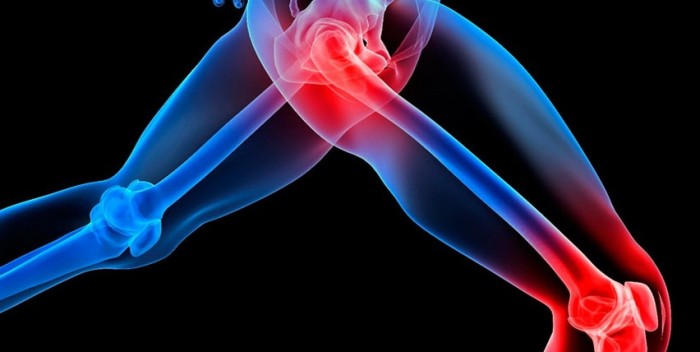
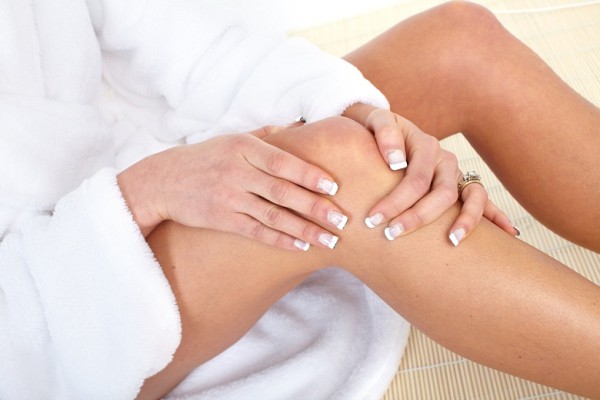
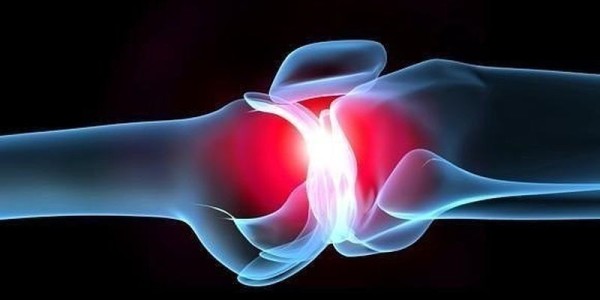
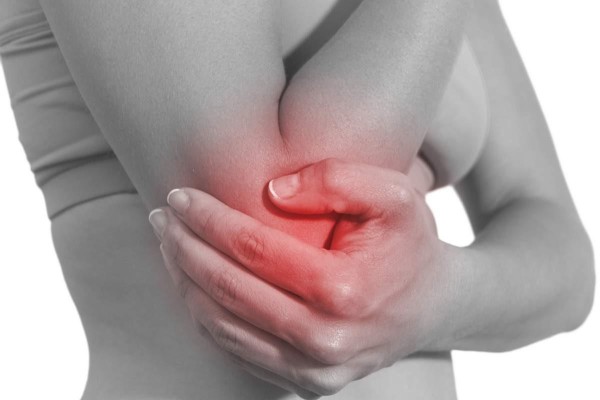
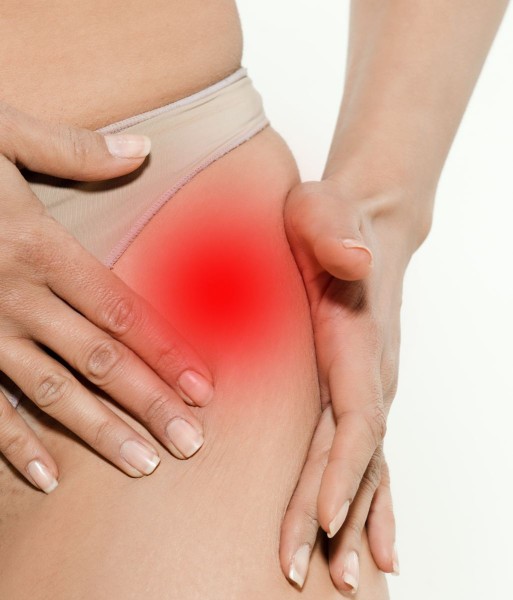
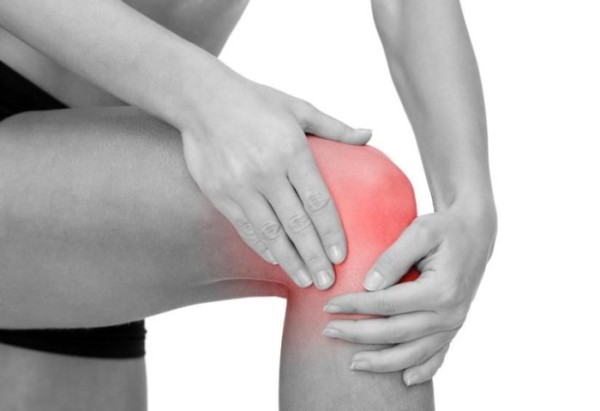
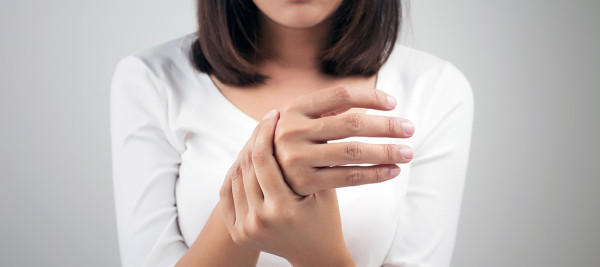
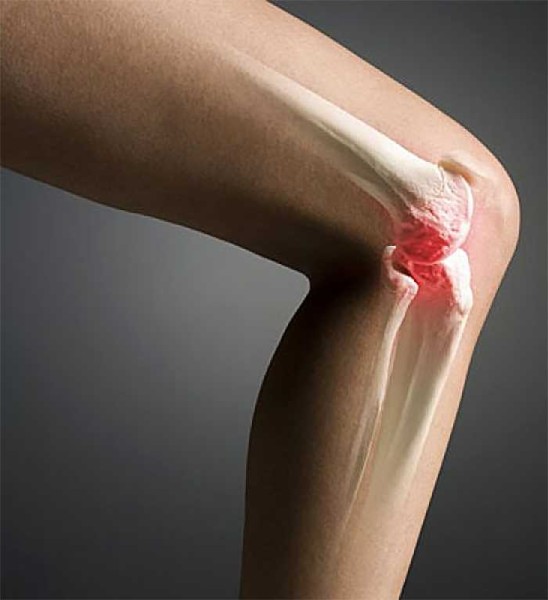
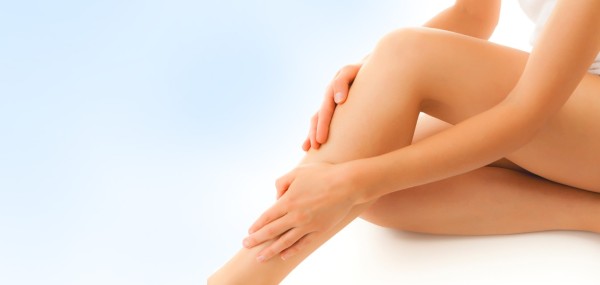


I am engaged in aerial gymnastics. Any microtrauma in the joints, back, neck can not be avoided. Nimesan helps with pain very well. I tried other means. BUT this is the surest choice of pain reliever.
There is also Movalis, an excellent drug, it acts quickly, no complications with the stomach and liver
There is also Movalis. Excellent and fast acting. No problems with the gastrointestinal tract and liver